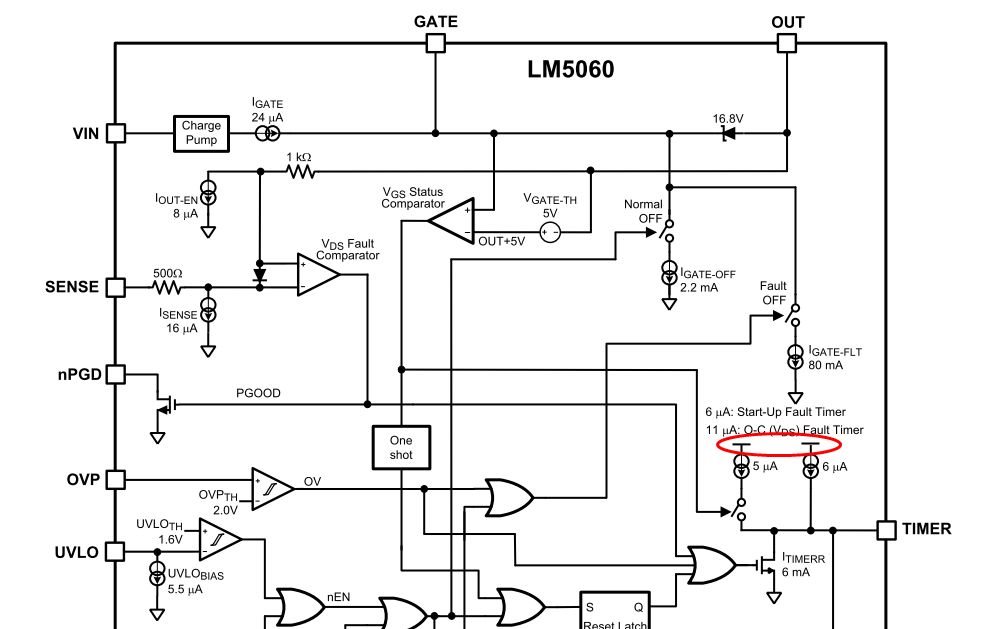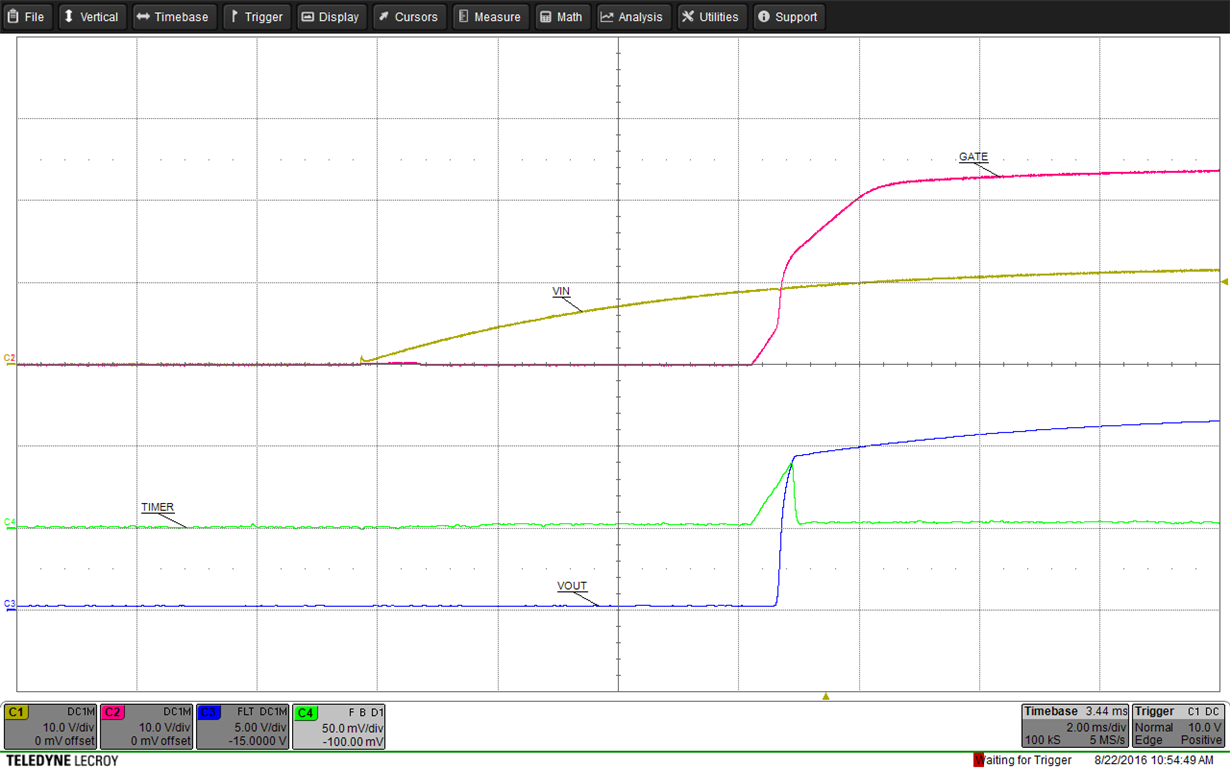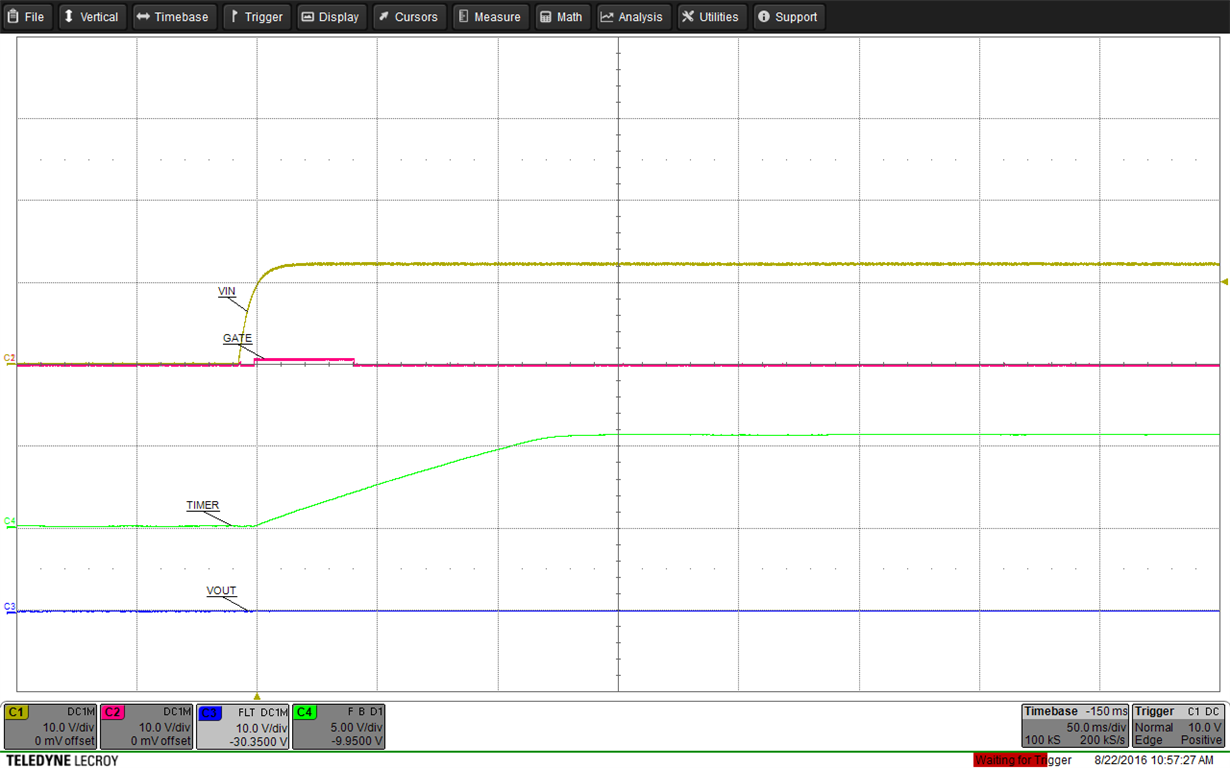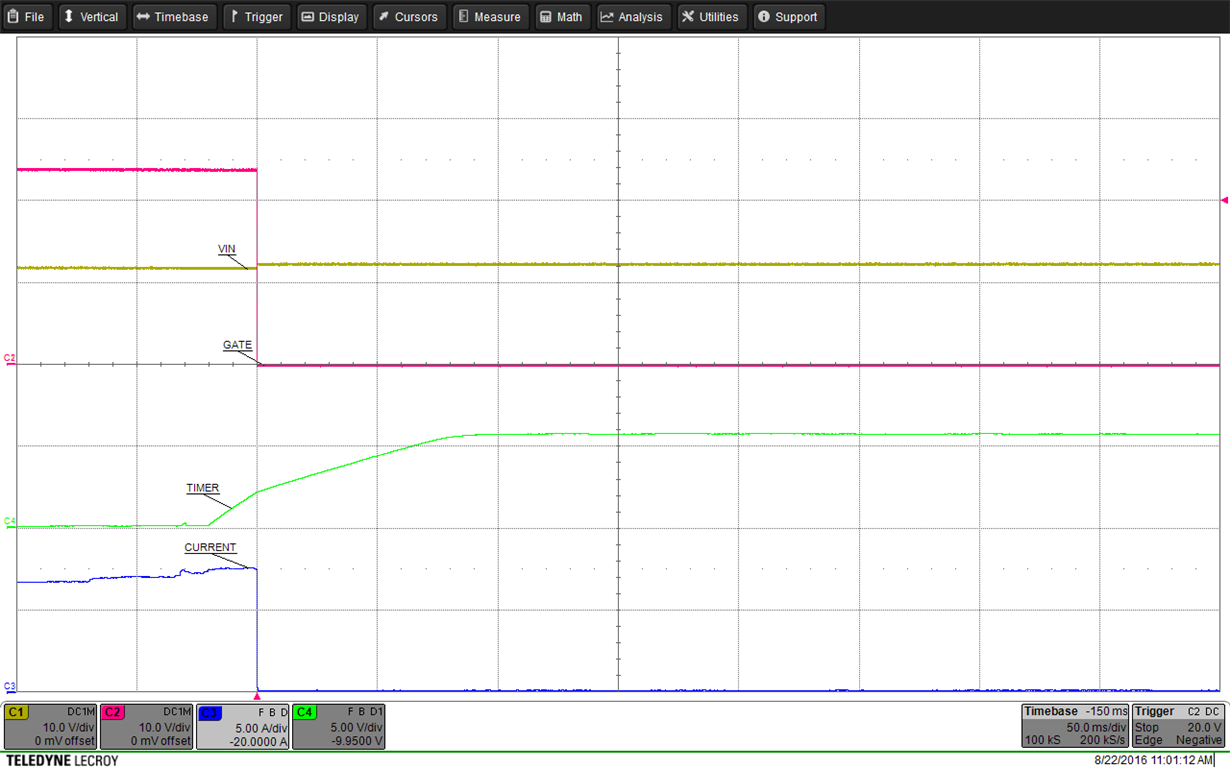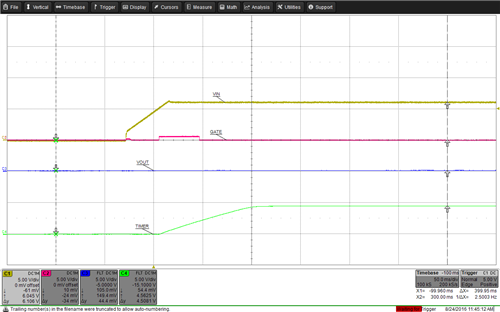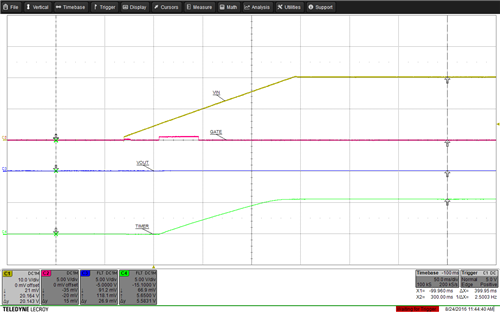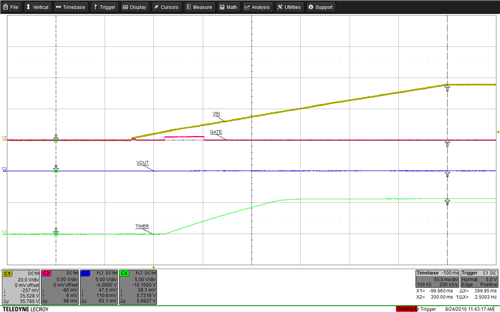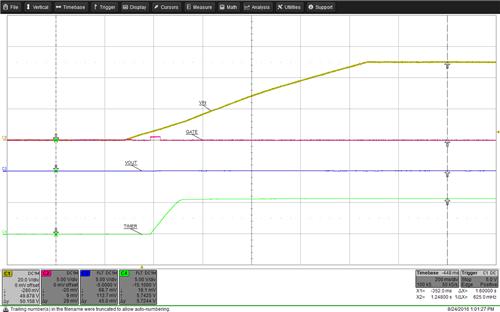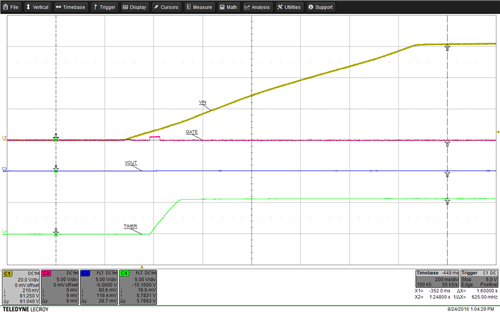Hi,
Please let me ask about the source voltage of timer charge current. I'm asking it because I'd like to know by how many voltage the TIMER pin voltage goes up. I guess that it may be the charge pump output, then I'd like to know the maximum voltage of internal charge pump output.
Best Regards,
Sonoki / Japan Disty


